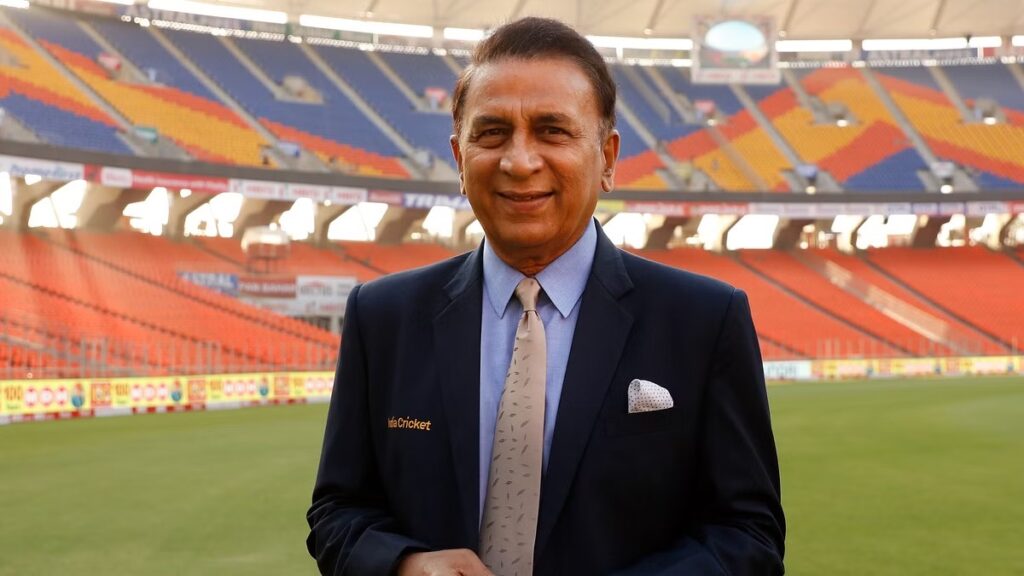The heart of the Indian cricket fan would brace itself up for the quick fall of the first Indian wicket. The rival new-ball bowlers would lick their lips in anticipation of making early inroads. Through the 1960s, it was considered a bonus if the scratch combinations at the top of the order put together any partnership of consequence.
For nearly a decade, after Pankaj Roy faded away from the scene and Nari Contractor was felled by a Charlie Griffith bouncer, India thrust upon a number of middle-order specialists the responsibility of being makeshift openers. While ML Jaisimha and Dilip Sardesai played a number of Tests as opening bats, there was always an air of fragility without a pair of specialist openers.
Then, Sunil Manohar Gavaskar came along.
In the 70s, he shone as the lodestar, the one who filled Indian hearts with hope and made rival new-ball bowlers aware that there would no longer be easy pickings. His impeccable efforts brought about a huge change in the perception of the national cricket team. He did something most important for Indian cricket.
Even though Virender Sehwag’s destructive simplicity is of more recent vintage and could be as overpowering as his knocks, some images from much earlier refuse to acquire sepia tones. Sehwag could be said to have changed the grammar of opening the innings, while instilling doubt in the minds of the opposition, but it was SMG who achieved the task of changing perceptions.
Long before the era of the selfies, GR Viswanath, the charismatic Mansur Ali Khan Pataudi, the elegant Ajit Wadekar, the magical spin quartet of BS Chandrasekhar, Bishan Singh Bedi, EAS Prasanna and S Venkataraghavan, the languid Salim Durani and the debonair Jaisimha were heroes in their own right. But Gavaskar’s batting trained the spotlight on him.
If you visualise a batter – without a helmet to protect him – get right behind the line of an express delivery, rising from just short of length, and get the meat of his bat to meet the cricket ball and make it drop dead at his feet, it is a good wager that the image is that of Gavaskar. He stood tall against the best attacks of the time, and helped India cross some tough frontiers.
Also Read: Gavaskar the Writer, Mr Methodical with the Pen, is Badly Missed
He had that hallmark of an exceptional batter, having that extra moment to play his stroke. His shot selection was impeccable. He could play every shot in the book and had a delightful straight drive, a rasping square cut, an elegant flick and even the daring hook that he would pull out when necessary. And, he was a great judge of the single.
Gavaskar was an amazing combination of technical perfection, artistry and, crucially, consistency. His presence at the crease was so reassuring for those tuned in to radio commentary or, towards the later third of his career, watching him on live television. He instilled confidence not just in the batter at the other end of the pitch, but also in those padded up and waiting to take their turn.
To be sure, in the early days of Indian cricket history, the team was blessed with openers like Vijay Merchant, said to be technically most accomplished, and the tall and strapping Syed Mushtaq Ali, who by all accounts was a buccaneer with the willow. But over a period of time, it was left to the classy Pankaj Roy and Nari Contractor to shine in the company of makeshift openers.
It was a particularly vexing time in the ’60s when poor starts were the order of the day, a half-century opening partnership coming across as a bonus – rarely, if ever, securing this in overseas conditions – and century stands came only once in a blue moon. It was almost as if the collective prayers of the Indian cricket fraternity were answered when Gavaskar stormed on to the scene.
You do not need statistics to validate Gavaskar’s contribution to Indian cricket as an opening batter who could play quick bowlers with comfort and confidence. Yet, if you did not grow up in the era when he was holding fort at the start of an Indian Test innings, it may help to know that opening century stands were hard to come by until he came along.
In fact, there were just 10 century stands for the opening wicket before Gavaskar’s advent. He was involved in 22 century stands with six different opening partners between 1971 and 1987. And if we expand that to include all first-wicket partnerships exceeding the 50-run milestone, India boasted of 52 such instances from 1932 to 1970. Gavaskar alone was involved in 57 such stands.
The late Chetan Chauhan, who walked out to open the Indian innings with Gavaskar the most times between 1973 and 1981, believed that together, they changed the belief that India did not have a pair of openers that was strong and complemented one another. “Of course, I was overshadowed by Sunil’s strong presence,” he said. “I guess my contribution to Indian cricket as a reliable and consistent opening batsman was recognised after I had called it a day.”
There were countless innings that his fans will remember. His final Test innings was a masterpiece against spin bowling on a wicked track in Bangalore. It remains as one of the finest played on Indian soil. Though he was unable to get India over the line with his knock of 96, he had done enough and more to leave the stage with the enormous respect of bowlers around the world.
However, his greater contribution, which can never be measured in runs and partnerships, came in changing the perception of Indian openers being fragile and fallible. By helping cross that threshold in great style, he ensured that India would not look back and, despite encountering turbulence sometimes, sail strongly ahead.




